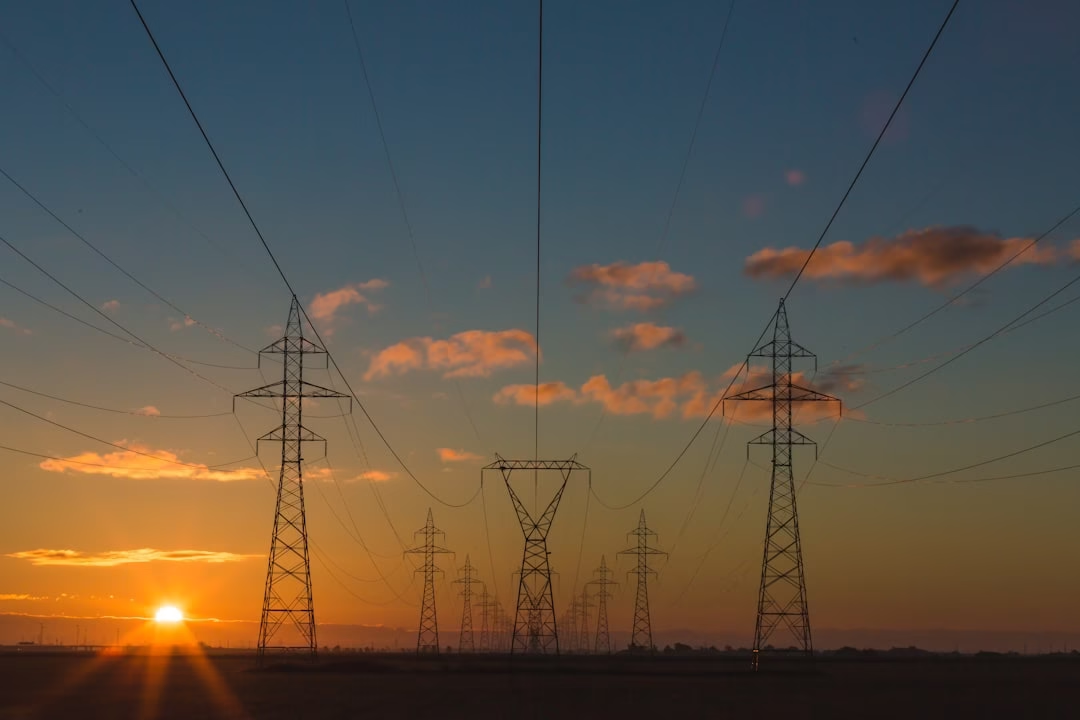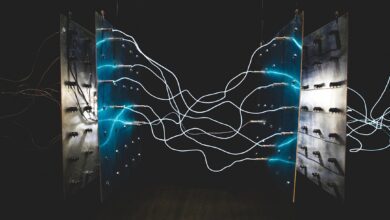Harnessing the Power of Water: Hydropower’s Essential Role in the Energy Transition and Global Energy Trends

As the world grapples with the urgent need to transition from fossil fuels and nuclear energy toward more sustainable solutions, hydropower emerges as a vital player in the renewable energy landscape. Harnessing the power of flowing water to generate electricity, hydropower offers an efficient and reliable source of green energy that can significantly contribute to global energy security and climate change mitigation efforts. In this article, we will explore the multifaceted role of hydropower in the energy transition, examining its potential to replace traditional energy sources, enhance energy storage capabilities, and improve overall energy efficiency. We will also delve into recent innovations that are driving advancements in hydropower technology, ensuring it remains competitive within the evolving energy markets. Additionally, we will analyze how global energy trends and policies are shaping the future of energy investment in hydropower, alongside other renewable resources such as solar power, wind energy, and bioenergy. Join us as we navigate the complex interplay of hydropower within the broader context of energy transportation, energy R&D, and the quest for a sustainable energy future.
- 1. The Role of Hydropower in the Energy Transition: A Sustainable Solution to Fossil Fuels and Nuclear Energy
- 2. Innovations in Hydropower: Enhancing Energy Efficiency and Storage for a Greener Future
- 3. Hydropower and Global Energy Trends: Navigating Energy Markets and Policy for Renewable Energy Investment
1. The Role of Hydropower in the Energy Transition: A Sustainable Solution to Fossil Fuels and Nuclear Energy
As the world grapples with climate change and seeks sustainable solutions, hydropower emerges as a vital component in the energy transition. This renewable energy source harnesses the power of flowing water to generate electricity, offering a cleaner alternative to fossil fuels and nuclear energy. With increasing concerns over carbon emissions and environmental degradation, hydropower contributes significantly to the shift towards green energy by providing a reliable and efficient energy source.
The role of hydropower in the energy transition is multifaceted. First, it serves as a crucial part of energy storage solutions, allowing for the balancing of supply and demand in energy markets. Hydropower plants can quickly adjust output based on electricity demand, enhancing energy security and stability in the grid. This flexibility positions hydropower as a complementary technology alongside other renewable sources like solar power and wind energy, which may be less predictable.
Moreover, hydropower contributes to energy efficiency by generating electricity with a low carbon footprint. It stands as a sustainable solution that minimizes the reliance on fossil fuels, thus reducing greenhouse gas emissions. As countries implement energy policies focused on combating climate change, hydropower’s capacity to provide consistent and clean energy aligns perfectly with global energy trends aimed at achieving a carbon-neutral future.
Additionally, hydropower plays a pivotal role in energy economics, particularly in regions where water resources can be effectively utilized. Investments in hydropower projects not only boost local economies but also enhance energy exports, making nations less dependent on energy imports. This capability is essential for achieving energy independence and security, especially in a world where energy transportation and distributed energy models are gaining traction.
As we look to the future, the integration of hydropower with smart grids and energy innovations will further optimize its potential. The ongoing research and development in energy R&D will lead to advancements in technology, improving the efficiency of hydropower systems and their integration with other renewable sources. With the rise of electric vehicles and the need for sustainable energy solutions, hydropower stands as a key player in the global shift towards a resilient and renewable energy landscape.
In conclusion, hydropower is not merely a transitional energy source but a cornerstone of the sustainable energy future. As we navigate the complexities of the energy transition, harnessing the power of water will be crucial in fostering a cleaner environment and a more sustainable economy.
2. Innovations in Hydropower: Enhancing Energy Efficiency and Storage for a Greener Future
Innovations in hydropower are critical to enhancing energy efficiency and storage capabilities, paving the way for a greener future. As the global energy landscape shifts towards more renewable sources, hydropower stands out not only for its reliability but also for its potential to integrate with other forms of green energy, such as solar power and wind energy.
Modern hydropower systems are evolving to become more efficient and environmentally friendly. Innovations like pumped storage hydroelectricity (PSH) allow for energy storage that can be released during peak demand periods, effectively acting as a large battery for energy markets. This energy storage solution supports the energy transition by smoothing the intermittency of other renewable sources, ensuring a consistent supply while reducing reliance on fossil fuels and nuclear energy.
Moreover, advancements in turbine technology are improving energy efficiency in existing hydropower plants. New designs enable turbines to operate at lower water flow rates, thereby generating electricity even during drought conditions. This adaptability plays a crucial role in enhancing energy security and resilience against climate change impacts.
Smart grids are another area where hydropower innovations are making a significant impact. By incorporating real-time data analytics and automated controls, smart grids optimize the distribution of hydropower alongside other energy sources. This interconnectedness not only improves energy efficiency but also lowers energy transportation costs, making renewable energy more competitive in the energy economics landscape.
Furthermore, research and development in hydropower are exploring the potential of integrating hydropower with emerging technologies such as hydrogen energy and carbon capture. These innovations could transform hydropower into a more versatile player within the broader spectrum of green energy solutions, enhancing its role in energy exports and imports.
As countries around the world pursue aggressive energy policies to meet climate goals, investments in hydropower innovations will be essential. This includes funding for new projects, retrofitting existing infrastructure, and exploring offshore energy opportunities where feasible. By embracing these innovations, the hydropower sector can significantly contribute to the global energy transition, ensuring a sustainable and secure energy future for all.
3. Hydropower and Global Energy Trends: Navigating Energy Markets and Policy for Renewable Energy Investment
As the world increasingly turns its focus toward sustainable solutions, hydropower is emerging as a pivotal player in the global energy landscape. Navigating energy markets and policy frameworks is essential for boosting renewable energy investment, particularly in hydropower. With rising concerns about climate change and the need to transition from fossil fuels, hydropower stands out due to its ability to provide a stable, efficient, and renewable source of energy.
Global energy trends indicate a significant shift toward renewable energy sources. Hydropower contributes to energy security by diversifying energy portfolios and reducing dependence on fossil fuels. Countries are increasingly investing in hydropower infrastructure as part of their energy policy strategies to meet climate targets and promote green energy initiatives. The integration of energy storage technologies further enhances hydropower’s viability, allowing for the management of supply and demand fluctuations in energy markets.
In addition to hydropower, other renewable sources such as solar power, wind energy, and bioenergy play a crucial role in the energy transition. As energy efficiency becomes a priority, innovations in smart grids and distributed energy systems are being adopted to optimize the generation and consumption of renewable energy. This interconnected approach not only maximizes output but also minimizes waste, making energy economics more favorable for investors.
Moreover, policies aimed at carbon capture and hydrogen energy development are paving the way for a comprehensive strategy to reduce greenhouse gas emissions across various energy sectors. The collaboration between hydropower and these emerging technologies can lead to a more resilient energy system capable of sustaining electric vehicles and other green technologies.
In conclusion, the hydropower sector is poised to thrive amidst changing global energy dynamics. By leveraging energy investments and fostering supportive energy policies, stakeholders can ensure that hydropower continues to be a cornerstone of the renewable energy landscape, contributing to a sustainable future while addressing the pressing challenges of climate change.
In conclusion, hydropower stands as a pivotal player in the global energy transition, offering a sustainable alternative to fossil fuels and nuclear energy. As we navigate the complexities of energy markets and policy frameworks, the role of hydropower in enhancing energy efficiency and storage cannot be overstated. Innovations in this sector are vital for creating a greener future, aligning with global energy trends that prioritize renewable energy and energy security.
Moreover, hydropower’s integration into smart grids and its compatibility with other renewable sources, such as solar power and wind energy, supports a diversified energy portfolio essential for climate change mitigation. With advancements in energy R&D, including trends towards distributed energy systems and hydrogen energy, the industry is poised for significant growth.
As nations push for greater energy investments, hydropower's potential to contribute to carbon capture and energy transportation will be crucial. This renewable energy source not only supports electric vehicles and bioenergy initiatives but also positions countries to enhance their energy exports while reducing imports. Embracing hydropower is more than just an environmental necessity; it represents a strategic approach to achieving long-term energy sustainability and resilience in the face of evolving global challenges.
Ultimately, investing in hydropower and its accompanying innovations will play an essential role in shaping a sustainable energy landscape, ensuring that we meet the demands of a growing population while safeguarding our planet for future generations.





